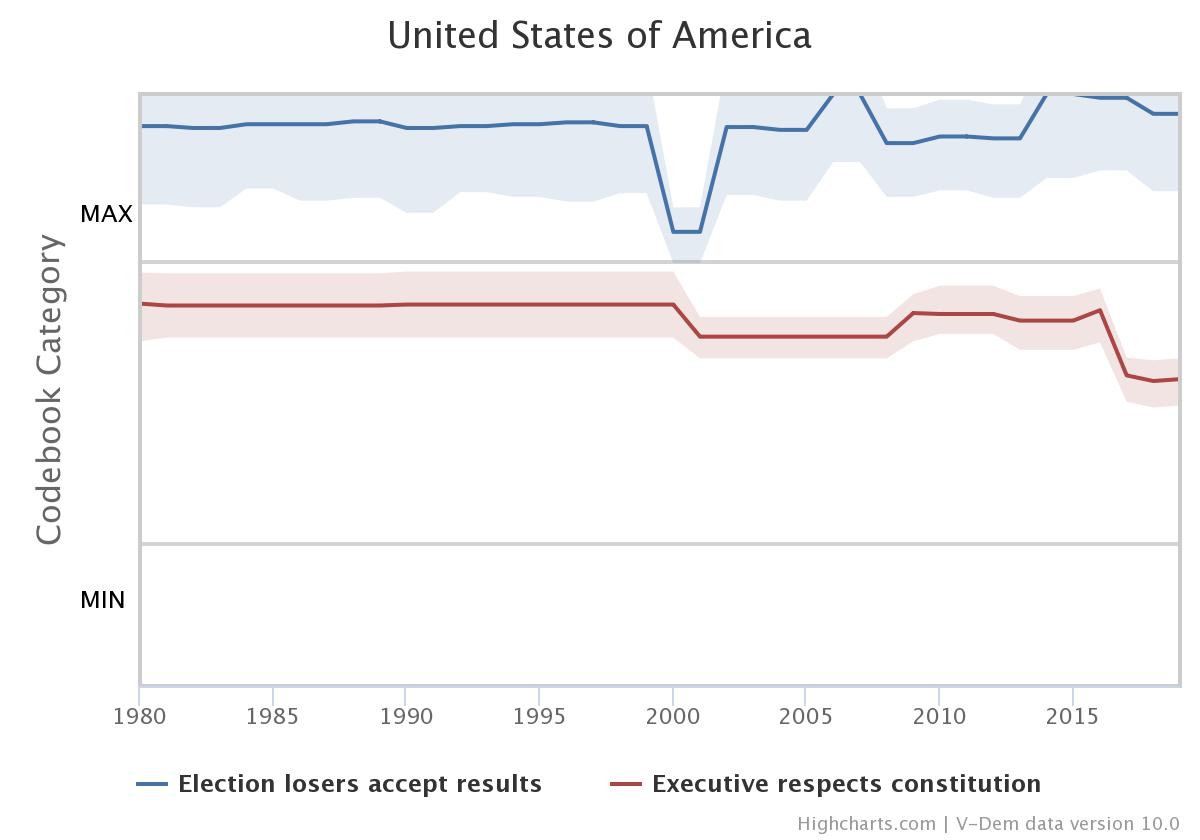Americans Cast Their Ballots: U.S. Democracy at a Crossroads
By: Ana Laura Ferrari
Nov 03, 2020
Voters in the United States decide today if Donald Trump stays for a second term or if Joe Biden becomes the 46th U.S. President. Incumbents have a natural advantage over the challenger in the polls. Since 1789, the vast majority of U.S. presidents were re-elected. However, the 2020 election is special in multiple aspects.
First, the COVID pandemic hit the United States strongly with more than 200.000 deaths since March. Many voters blame the Trump administration for its management of the health crisis. Second, Trump has contributed to American society's increased polarization and has an ambiguous stance toward democratic institutions.
Trump's attitudes and statements differ from previous presidents, as we can see in the graph below. The graph shows the evolution of two V-Dem indicators from 1980 to 2019. The blue line represents the "election losers accept results" indicator, which measures how many losing parties and candidates accepted the election's result, from "none" to "all." In red, we have the "executive respects constitution" indicator which measures how often executive members respect the constitution or violate it without legal consequences.
As the graph shows, parties in the U.S. have almost always accepted the results of presidential elections, with minor exceptions. In 2000, for example, the winner of the presidential election was decided by some hundreds of votes in the state of Florida. The close results made Democrats call for recounts, which the Supreme Court blocked. The controversy continued for weeks until all parties and candidates accepted George W. Bush's victory.
Compared to other episodes, Trump's ambiguity regarding the acceptance of the election results is unprecedented. For the first time, a candidate refuses to affirm that he would peacefully hand over power if he loses the election. He also casts doubt on the vote-by-mail system, although there is no evidence that it is susceptible to fraud.
According to the V-Dem data, the Trump administration shows less respect for the constitution than any other before. As the red line in the graph shows, this indicator dropped sharply after his election in 2016. During his term, critics have accused him of intervening in the Department of Justice, abusing his presidential powers, and obstructing Congress. He also has retained ownership of business while in office, leading to conflicting interests.
Acceptance of electoral results and respect for the constitution are primary conditions for democratic stability. Thus, the 2020 elections and their aftermath represent a critical juncture for U.S. democracy.


